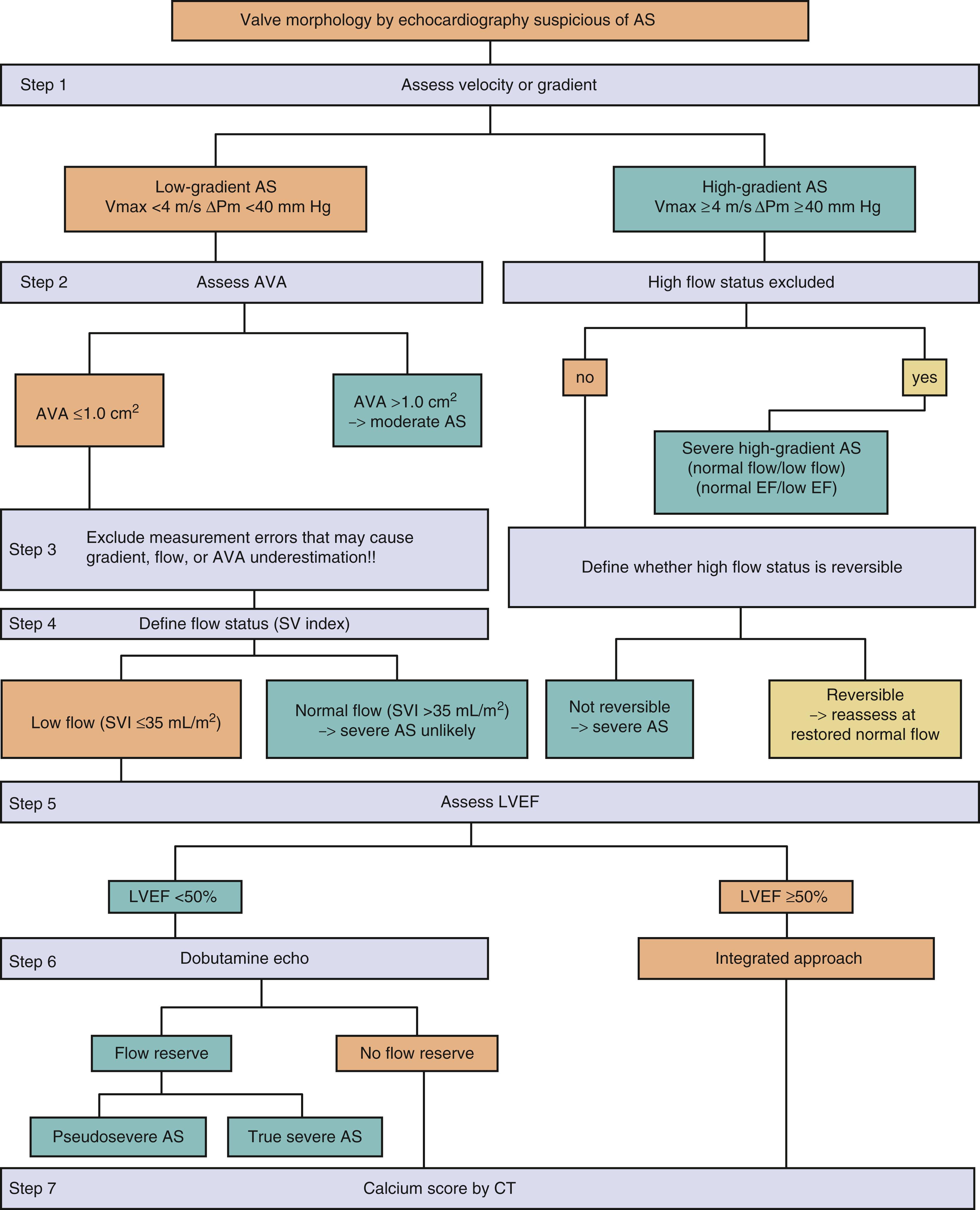Physical Address
304 North Cardinal St.
Dorchester Center, MA 02124
We thank Drs. Linda D. Gillam, Konstantinos Koulogiannis, and Leo Marcoff for their contributions to the previous edition of this chapter.
Transcatheter aortic valve replacement (TAVR) has emerged as a new option for the treatment of patients with severe symptomatic aortic stenosis (AS). Although initially approved for patients considered inoperable or at greatly increased risk for surgical aortic valve replacement (SAVR), recent clinical trials have proved that TAVR is noninferior or even superior to SAVR in patients at intermediate and low surgical risk. Echocardiography plays an essential role in TAVR patient selection, intraprocedural monitoring, and postprocedural follow-up, with three-dimensional (3D) echocardiography playing an increasingly important role.
Two types of transcatheter heart valves (THVs) are currently available: mechanically expandable and self-expanding. Each THV comes in various sizes, to be implanted according to the patient’s aortic annulus and root size. A description of valve structure, delivery techniques, and clinical experience with these valves is beyond the scope of this chapter, so readers are referred to each THV’s labeling material or the European Association of Echocardiography/American Society of Echocardiography (ASE) recommendations for the use of echocardiography in new transcatheter interventions for valvular heart disease for additional detail.
The presence of severe AS must first be established using the current guidelines. Pivotal trials have been limited to patients with high transvalvular velocities and mean gradients (≥ 4 m/s and ≥40 mm Hg, respectively). Although severity grading is usually a straightforward process, it can be challenging in patients with low-flow, low-gradient (LFLG) AS. On one hand, the aortic valve opening may be limited by the low-flow condition, therefore exaggerating the severity of disease (pseudo-severe AS); on the other hand, the low-flow state may present with low gradients despite a severely stenotic valve. In this scenario, dobutamine stress echocardiography is a useful tool to differentiate between “real severe” and moderate, “pseudo-severe” AS. The inotropic effect of dobutamine (provided there is contractile reserve, defined as improvement in stroke volume >20%) restores a “normal flow state” and allows proper estimation of gradients, peak velocities, and valve area.
A detailed stepwise approach for evaluation of AS, as recommended by European Association of Cardiovascular Imaging/ASE guidelines ( Fig. 164.1 ). LFLG AS is usually defined as a mean transvalvular gradient less than 35 mm Hg, an effective orifice area less than 1.0 cm 2 , and left ventricular ejection fraction (LVEF) 40% or greater. The True or Pseudo-Severe Aortic Stenosis - transcatheter aortic valve implant (TOPAS-TAVI) study has shown the benefit of TAVR in such patients. Although in this study, dobutamine echocardiography was critical for patient selection for TAVR (distinction of severe vs pseudo-severe AS), patients had improved outcomes after TAVR regardless of the presence or absence of contractile reserve. More recently, LFLG AS has also been described in patients with preserved LVEF.

Become a Clinical Tree membership for Full access and enjoy Unlimited articles
If you are a member. Log in here